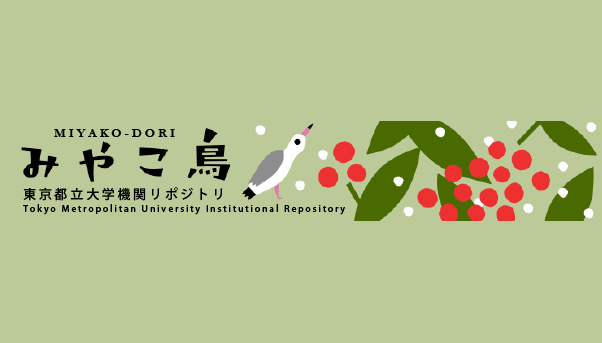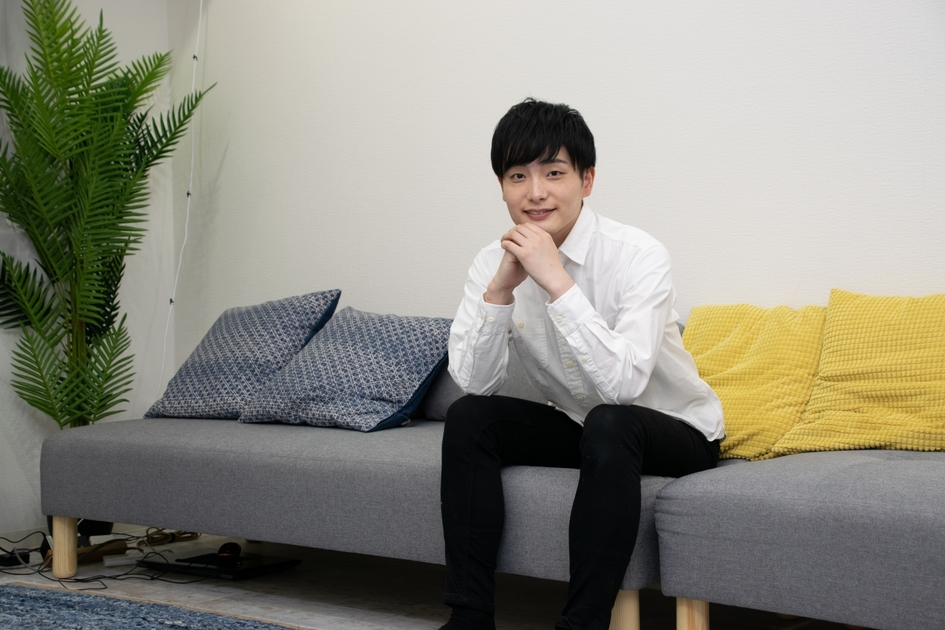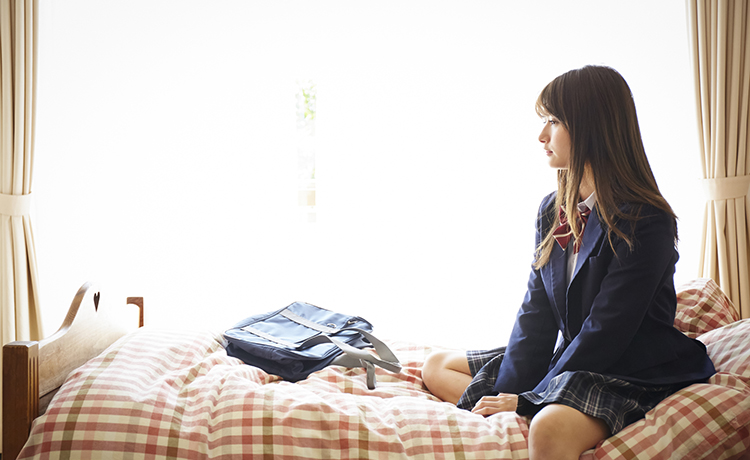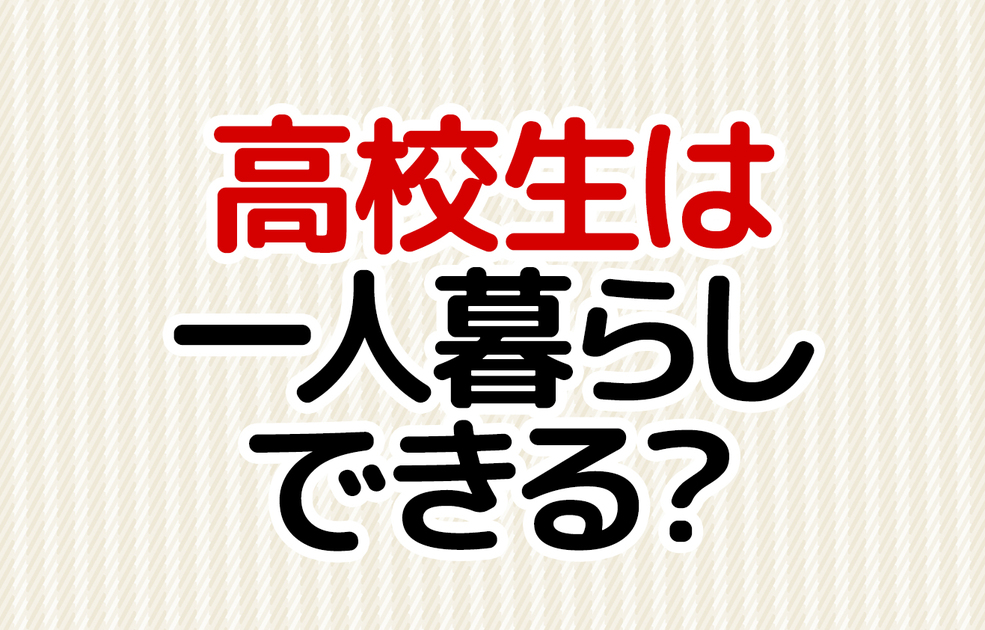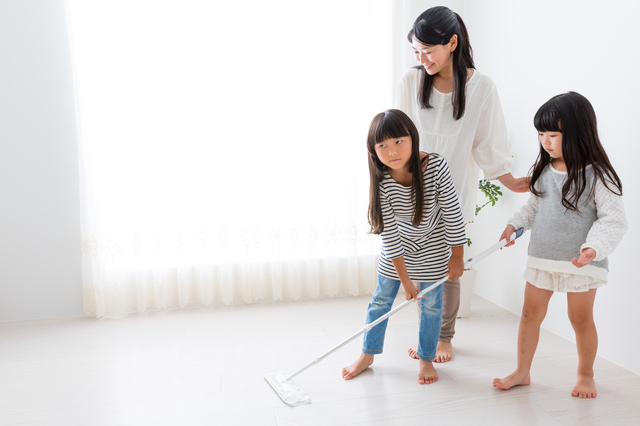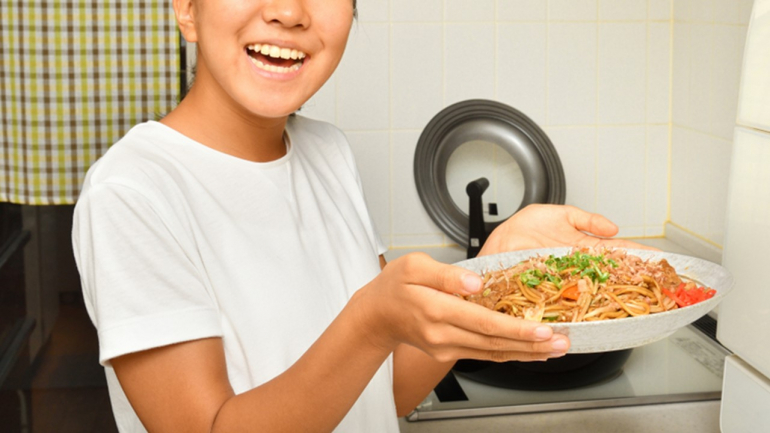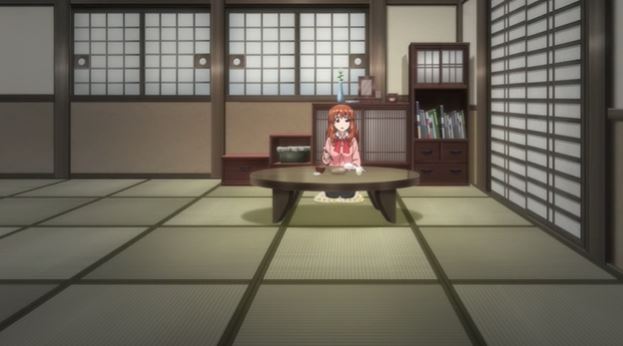
Introduction
You would always have a question when watching an anime featuring high school students. Why do Japanese high school or junior high school students live alone? Are teens really living alone in real Japan? In fact, high school students rarely live alone in Japan. In conclusion, the reason why the anime characters live alone is just the setting in the story production. But do you know that the production also has a compelling reason? In this article, I, a native Japanese, will explain this. Based on various statistics and each scene of the anime, this article will help you to understand Japan more deeply.
1. Reasons Why Japanese Teenagers Appearing in Anime Live Alone
Many Japanese anime high school students live alone. They are surprisingly good at cooking and financially stable. So why are they living alone? First, let’s check the reason for their living alone.
Jin Mikuriya from “Kannagi: Crazy Shrine Maidens”
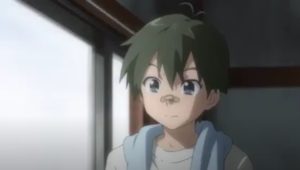
His mother died early and his father works abroad.
Ayumu Aikawa from “Is This a Zombie?”

His parents travel around the world many times.
Lucy from “elfen lied”

She was abandoned by her father at an early age.
Shirou Emiya from “Fate/stay night”


His parents died in a fire, and a foster parent also died. However, there are several attractive women around him.
Rin Toosaka from “Fate/stay night”

Her parents died. She has a strong partner. At first, she seemed to be dissatisfied with her partner.
Touru Honda from “Fruits Basket 1st Season”

Her parents died.
Eita Kidou from “Oreshura”

His parents disappeared due to parental reasons.
Tomoya Aki from “Saekano: How to Raise a Boring Girlfriend”
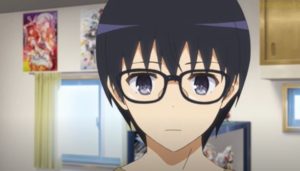
His parents are absent on a trip.
Haruka Nanase from “Free!”

Her mother accompanies her father who has been assigned to work alone.
As you can see, there are many reasons why parents are absent due to death or work. These are very sad reasons, but they are the easiest and most convenient way for the creators of the story. On the other hand, few characters live alone because of children, such as “I want to be a cartoonist” or “I want to be a baseball player.”
2. Hayao Miyazaki’s Anime Main Characters Have No Parents
You’ve probably seen Hayao Miyazaki’s anime. If you’ve seen his anime, you’ve probably noticed this fact. The main characters in his anime have no parents. Why is this?
Hayao Miyazaki’s answer to this question is simple. “In general, children can’t play an active role unless they are orphans.” This idea may be common to Japanese animation.
The link is in Japanese, so use the translation function of your browser.
3. Statistics of Japanese High School Students Living Alone
It is difficult for high school students to live alone in Japan. That’s evidenced by the 2015 census. The census is for the Minister of Internal Affairs and Communications to prepare census statistics. The subject of the census is all people and households, including foreign nationals in Japan. The census is conducted every five years, but the 2020 census has not yet been obtained, so the results of the 2015 census are shown below.
The link is in Japanese, so use the translation function of your browser. But don’t worry. The English translation of the necessary parts is summarized in the following sentence.
3.1. Percentage of Japanese Teenagers Living Alone
The results of the census show that there are very few high school students living alone. 0% of single-person households are under the age of 15. The percentage of single-person households between the ages of 15 and 19 is 6.6% for men and 5.4% for women. The percentage of Japanese high school students living alone is 5-6%.
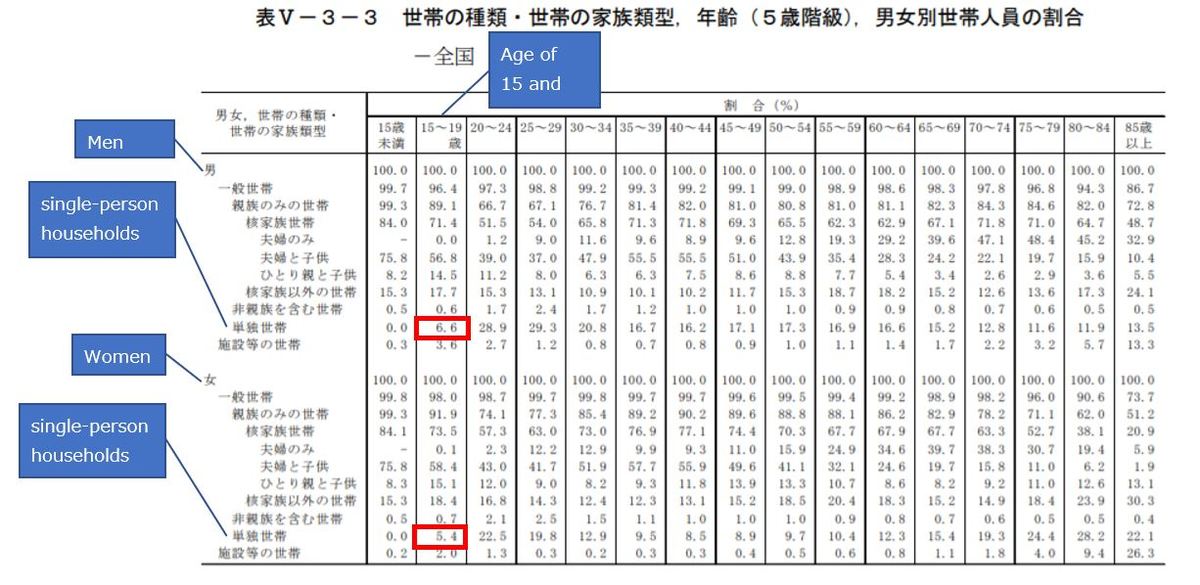
Famous works by high school students living alone in anime are “March Comes in Like a Lion” and “Hidamari Sketch”.
“March Comes in Like a Lion”
“Hidamari Sketch”
Others include “Heaven’s Lost Property”, “Sagrada Reset”, and “Noucome”. However, very few high school students live alone in real life. So why are there so few high school students living alone in reality?
“Heaven’s Lost Property”
It can be evaluated that it is unbearable to see, but it can also be evaluated that it is interesting that it is a little naughty and stupid. Of course, I evaluate the latter.
“Sagrada Reset”
A work where you can enjoy an excellent story that has been elaborated. Recommended for the general public.
“Noucome”
The setting is so intense that you need to have an intermediate or higher qualification as Geek to enjoy this anime. Of course, I enjoyed it enough.
3.2. Percentage of Japanese Teenagers Living in School Dormitories
“Ace of Diamond”
Royal road youth sports Anime.
“Jujutsu Kaisen”
Battle Anime rumored to be the second most popular after “Demon Slayer”
“The Pet Girl of Sakurasou”
Anime is a little old, but is said to be a complete romantic comedy. This is recommended.
There are a lot of animes that have high school students living in school dormitories. For example, “Ace of Diamond”, “Jujutsu Kaisen”, “The Pet Girl of Sakurasou”. Other than that, “The Kawai Complex Guide to Manors and Hostel Behavior”, “Comic Girls”, “Food Wars !: Shokugeki no Soma”, etc. However, very few high school students actually live in dormitories in Japan. According to the 2015 census, 3.6% are men and 2.0% are women. This is less than living alone.
“The Kawai Complex Guide to Manors and Hostel Behavior”
Fairly funny Romantic Comedy
“Comic Girls”
CGCT Anime
“Food Wars !: Shokugeki no Soma”
Anime that makes me hungry when You see this.
Especially in Japan, where high school baseball is popular, there are many patterns in which high school boys who enter a strong school live in a dormitory. Even so, I was surprised that the percentage of high school boys living in “households such as dormitories” was 3.4%. When a high school student leaves his or her parents and enters a strong school from outside the prefecture, it is sometimes called studying abroad in baseball. This is not exactly study abroad because it is the same Japan. However, it is said that it is very difficult for high school students to leave their parents in Japan.
3.3. Percentage of double-income households
The National Life Basic Survey conducted by the Ministry of Health, Labor and Welfare in 2019 shows interesting results. As children get older (the older they are in high school), the proportion of double-income households tends to increase.
- The percentage of double-income workers is 80.4% In households with children aged 15 to 17
- The percentage of double-income workers is 76.0% In households with children aged 7 to 8
- The percentage of double-income workers is 49.8% In a family with 0-year-old children
The link is in Japanese, so use the translation function of your browser.
Therefore, the following animes are the same as reality.
Syaro from “Is the Order a Rabbit?”

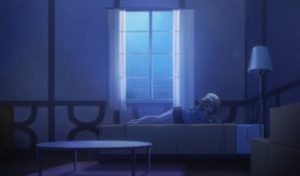
Her parents are in migrant work.
Kodaka Hasegawa from “Haganai”
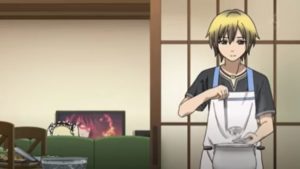
Their father was transferred overseas.
Ryou Machiko from “Gourmet Girl Graffiti”
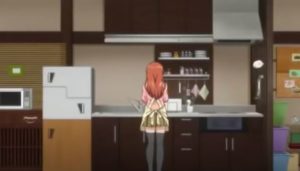


Her parents live abroad for work. Her grandmother, who lived with her, has died.
Makoto Itou from “School Days”

His mother is a night shift. But it’s clear that this isn’t the cause of the “Nice Boat”.
Also, like “Minami-ke” and “K-On!”, There are many animes that live with their parents in the story, but their parents do not appear at all. Not letting the parents feel is that the children are independent. This is a necessary element for the main characters of anime. It is a general Japanese sense to think that high school students who can do household chores and students who have a part-time job in their household budget are “reliable”.
“Minami-ke”
“K-On!”
In the same way, high school students who do not feel their parents are like “firm and hero”, which is why real high school students yearn for them. In “Haikyu !!”, Syouyou Hinata’s mother and sister will appear, so you will feel a sense of intimacy. But when Tobio Kageyama’s parents appear, you’ll feel uncomfortable. He is a character who can do anything by himself. So he’s so cool. If he were a character consulting with his parents for anything, the character’s charm would be missing.
“Haikyu!!”
4. Japanese Parents don’t Want their Children to Live Alone
I will explain the meaning of “Children cannot play an active role if they have parents”, as directed by Hayao Miyazaki. Japanese parents tend not to make their children independent compared to overseas parents. A brief introduction to the differences between the United States and Japan in terms of life, money, study, and parenting.
The link is in Japanese, so use the translation function of your browser.
4.1. Life
In the United States, it is taken for granted that children also share all the work and housework as members of the family. On the other hand, in Japan, children’s lives are designed around education and lessons, and children’s discipline and housework practice are low priority.
“Sound! Euphonium”

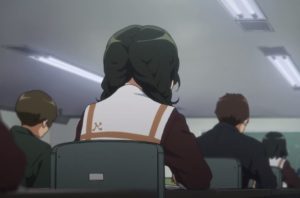
46% of elementary school students attend cram schools, 61% of junior high school students, and 27% of high school students.
4.2. Money
Children in the United States have been entrusted with managing money such as clothes and stationery since they were in elementary school, and some families also allow children to invest in stocks. Japanese children receive free pocket money from their parents, and their use of pocket money is sweets and toys. Therefore, they do not know how to buy daily necessities or school supplies and the market price.
“Beyond the Boundary”
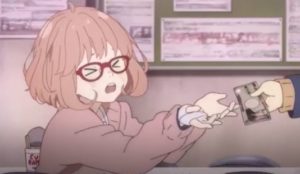
In her case, she will be able to spend the right amount of money. Because she is poor.
4.3. Study
American parents respect their children’s free personalities, abilities, and talents. Japanese parents project their wishes to their children. Children’s hopes are not emphasized. This tendency is especially strong for mothers. It is a typical Japanese mother’s parenting method to have a child do a lot of lessons.
“Magical Girl Lyrical Nanoha”
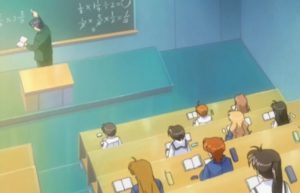
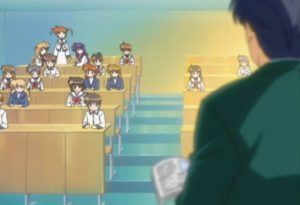
Nanoha and others in elementary school also go to cram school.
4.4. Parenting
American parents treat their children on an equal footing, do not own them, and raise them so that they can decide and act on their own. They also consider it the parent’s responsibility to make their children independent and contribute to society as soon as possible. On the other hand, Japanese parents tend to own their children, and it is their responsibility to give their children a lot of good education. Parents try to protect their children forever, and their children expect it. It is not uncommon in Japan for many university students to live with their parents.
“Wataten!: An Angel Flew Down to Me”
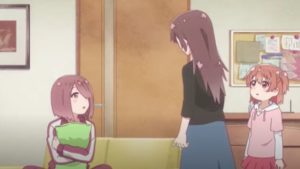
A college student who wants to stay home, she seems to like living with her parents at home. She may be more comfortable living in her parents’ house, as she is also known to take care of her sister.
As you can see from these comparison results, overseas parents and Japanese parents have completely different ideas. Japanese parents forever own their children. This tendency is especially strong for mothers. Therefore, there are few children who try to live alone on their own initiative. Children who have been raised in this way until they become high school students cannot be mentally and financially independent.
5. Problems when High School Students Live Alone in Japan
As explained in Chapter 3, when a high school student lives alone in Japan, parental consent is always required. There are a number of other issues that high school students must overcome if they live alone.
The link is in Japanese, so use the translation function of your browser.
5.1. Rental Contract
First is the issue of rental contracts. Since high school students are minors, they cannot rent an apartment by themselves. The contract requires parental consent. Even if they are working, minors will not pass the contract review. The contract examination of the rental company is very strict. This is because high school students are not old enough to deal with emergencies. There are some properties in Japan where high school students can move in alone, but the landlord who manages them often refuses to move in high school students who live alone. In Japan, high school students are children, not adults.
“Hinamatsuri”
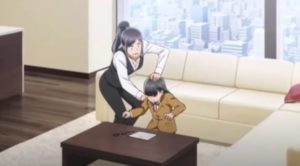
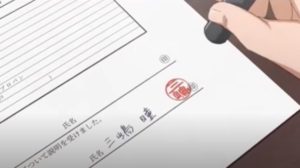

It is difficult for high school students to make a rental contract. That said, you shouldn’t force high school students to make a rental contract.
5.2. School Rules
Some schools have school rules that prohibit living alone. Therefore, if you go to a school where you are not allowed to live alone, you have to go from your parents or relatives’ house no matter how far you are. It is not uncommon for high school students to take two hours to commute to school one way.
“5 Centimeters per Second”

School rules do not allow living alone, but motorcycle commuting is often permitted.
5.3. Housework and Cooking
As explained in Chapter 4, many Japanese parents do not force their children to become independent. Therefore, Japanese teenagers do not have sufficient financial sense. Many parents are skeptical about whether they can live alone, even if they have enough living expenses. Moreover, Japanese high school students do not have high living ability. Even if the child becomes a high school student, most of the households have parents cooking, washing and cleaning
This can be easily proved from the data of the Tokyo Gas Urban Life Research Institute in 2014.
The link is in Japanese, so use the translation function of your browser.
51% of high school boys and 44.4% of high school girls chose “not very applicable” or “not applicable” in the questionnaire as to whether or not to clean the room by themselves. Half of the high school students have their parents clean their rooms.
According to LINE Research in 2020, 18% of high school boys and 27% of high school girls cook at least once a week. Considering that we spent a lot of time at home in 2020 due to the coronavirus, this is a very small number. It is a surprising truth that 36% of high school boys and 27% of high school girls do not cook at all.
The link is in Japanese, so use the translation function of your browser.
Unfortunately, there are few junior high school and high school students who do household chores like Shirou Emiya of “Fate / stay night” and Ryou Machiko of “Gourmet Girl Graffiti” in Japan.
“Today’s Menu for the Emiya Family”

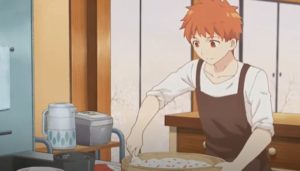
“Gourmet Girl Graffiti”
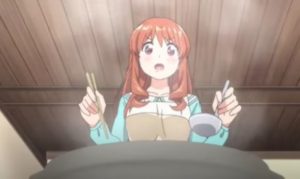
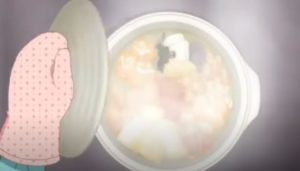
5.4. Living Expenses
The biggest problem that high school students have to solve in order to live alone in Japan is living expenses. The property that high school students can move in is relatively low at around 50,000 yen (500 dollars) a month, but the cost of housing in Japan is complicated and the one-time cost is high.
One-time Cost about Housing in Japan
- advance rent payments:100,000 yen (1,000 dollars)
- security deposit:50,000 yen (500 dollars)
- key money:50,000 yen (500 dollars)
- commision:50,000 yen (500 dollars)
- fire insurance fee:10,000 yen (100 dollars)
- Key exchange fee:10,000 yen (100 dollars)
Moving costs and purchase costs for daily necessities
- Moving costs
- Purchase costs for home appliances and furniture
- Daily necessities cost
In Japan, an initial cost of 500,000 yen (5,000 dollars) is required just to start a new life. The average cost of living for a single person is 150,000 dollars a month. This is a high amount even if parents send it monthly. Moreover, the average amount of money a high school student can earn from a part-time job is 40,000 yen (400 dollars). They cannot live on this. On the other hand, if high school students work part-time, they will run out of study time.
High school students who can work part-time with their studies, such as the main characters of “Maid Sama!”, “Blend S”, and “WORKING !!”, are extremely rare in reality. In particular, students like Souta Takanasi who can do all of their studies, part-time jobs, and housework are fantasy.
“Maid Sama!”

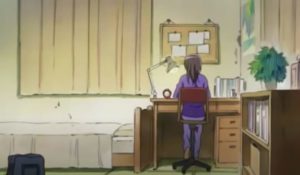

She works part-time, studying, and serving as student council president.
“Blend S”
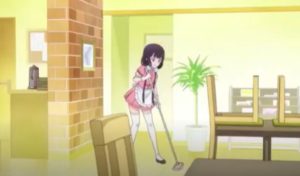

She is also working hard both studying and working part-time. The high school uniform she attends and the uniform of her coffee shop happen to be the same pink color.
“WORKING!!”


He does not only study and work part-time, but also does household chores without any problems.
Most of the reasons why high school students find it difficult to live alone are social aspects such as rental contracts and school rules, housework and cooking, and living expenses. That’s why the creators give the anime characters who live alone an even bigger element to clear these causes. Yes, they have no parents. This is a very realistic setting. This is because without parents, one would have to live alone. However, it is not good to blame “many characters in the same situation” as the creator’s negligence. They are busy with the most important stories and worldview ideas.
6. Three Reasons Real Japanese High School Students Live Alone
It is very difficult for high school students to live alone in Japan. Still, there are three main reasons for high school students living alone. Parents’ transfer, distance to school, and family circumstances.
6.1. Parents’ Transfer
There is a risk that parents will separate adolescents from their peers as they relocate. The reason Kodaka Hasegawa of “Haganai” lives with his sister is because of his father’s transfer abroad. For Kodaka, who has traveled all over the country since childhood and has a past of not being able to make friends, this parent’s decision is valid.
“Haganai”

6.2. Distance to School
The reason why Yuno of “Hidamari Sketch” lives alone is “because the school is far away”.
“Hidamari Sketch”
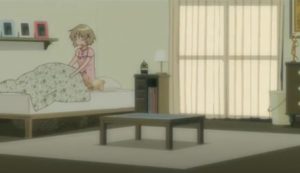
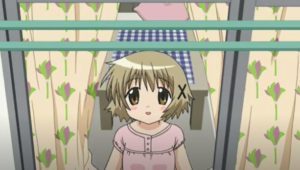
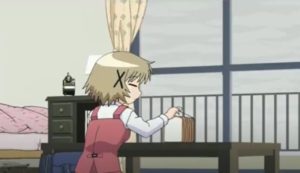
According to a basic school survey conducted by the Ministry of Education, Culture, Sports, Science and Technology, 428 schools in Tokyo rank first in the number of schools by prefecture. The lowest is 32 schools in Tottori prefecture. Especially those who want to study professionally like Yuno must go to Tokyo.
The link is in Japanese, so use the translation function of your browser.
6.3. Family Circumstances
In some cases, children are expelled from their homes because of their parents’ remarriage, or because they are being abused.
“Kotoura-san”

It’s sad that she’s in a bad situation because she can read people’s hearts.
7. High School Student Living with Brothers and Sisters
High school students living with their brothers are often depicted in the anime.
“Rozen Maiden”
Since the parents of the main character of “Rozen Maiden” are abroad, only his sister and younger brother live.
“Da Capo”

Since the parents of the main character of “Da Capo” are also abroad, only his brother and sister live.
“Yosuga no Sora”
In “Yosuga no Sora”, only his brother and sister live because his parents died.
“Penguindrum”
In “Penguindrum”, only three siblings live because their parents have special circumstances.
“SHUFFLE!”

In “SHUFFLE!”, Childhood friends Rin and Kaede live together due to the death of their parents and overseas business trips.
In reality, living with siblings is less common than living alone. The reason why many brothers live in anime is that the essence of the story that the author wants to draw exists there. We are impressed that they solve problems that are too big for junior high school and high school students while helping each other and grow up to be adults. There is no need for parental help.
Summary
In anime, the reason why high school students live alone is whether their parents are dead or working abroad, and there are few cases where they live alone on their own initiative. In reality, high school students have very high hurdles to live alone, such as rental contracts, school rules, household cooking, and high living expenses. In addition, the education of Japanese parents does not focus on the independence of their children in the first place. Therefore, an anime high school student who lives alone because he has no parents is a realistic reason.

